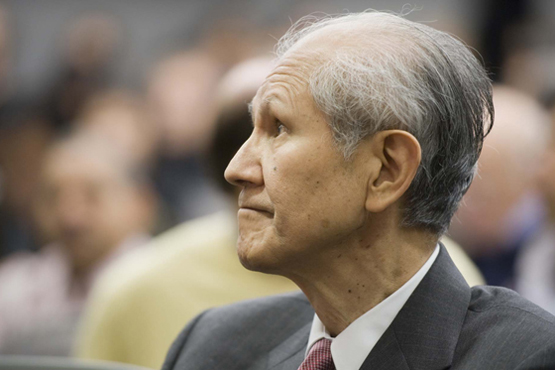Osamu Shimomura’s Serendipitous Nobel: Returning to BU, a chemist recounts a remarkable scientific journey
Osamu Shimomura stood quietly in front of a Medical Campus audience yesterday, slender shoulders slouched forward, eyes gazing down.

Beside him, David Atkinson, chairman of the School of Medicine physiology and biophysics department, displayed a gold medallion the size of his palm to the growing crowd: Shimomura’s Nobel Prize in chemistry.
“See that everybody?” Atkinson asked. “That’s the real thing.”
Shimomura, a MED professor emeritus of physiology and a former senior scientist at the Marine Biological Laboratory in Woods Hole, was one of three winners of the prize in 2008 for his discovery of green fluorescent protein in the jellyfish Aequorea victoria. He shared the $1.4 million award with Martin Chalfie of Columbia University and Roger Y. Tsien of the University of California, San Diego, two researchers who pioneered cellular research techniques using the proteins Shimomura identified.
Shimomura was back at BU to give his Nobel Prize presentation, Discovery of Green Fluorescent Protein, GFP: My Nobel Prize Lecture, before dozens of BU faculty, staff, and students in the auditorium at 670 Albany Street.
President Robert A. Brown introduced Shimomura. Without the researcher’s discovery of “tiny molecular flashlights,” Brown said, many of the experiments performed in laboratories around the world, in fields ranging from biophysical chemistry to ecology and evolution, would not be possible.
All this from a man who saw the horrors that scientific experimentation can bring. At 16, Brown recounted, Shimomura was 15 kilometers from the epicenter of the atomic bomb dropped on Nagasaki at the end of World War II.
Read the whole story by Leslie Friday on BU Today